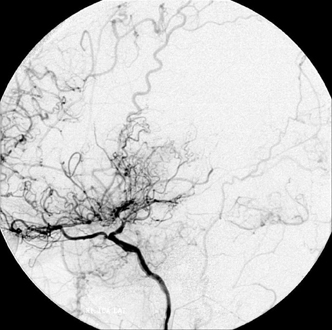Yonsei Med J.
2007 Oct;48(5):876-878. 10.3349/ymj.2007.48.5.876.
Off-Pump Coronary Artery Bypass Grafting in Moyamoya Disease
- Affiliations
-
- 1Department of Thoracic and Cardiovascular Surgery, Yonsei University College of Medicine, Seoul, Korea. kjy@yuhs.ac
- KMID: 1122629
- DOI: http://doi.org/10.3349/ymj.2007.48.5.876
Abstract
- Moyamoya disease is an occlusive intracranial arteriopathy owing to intimal hyperplasia with formation of abnormal cerebrovascular collateral networks; however, the etiology remains unclear. Although this disease is known to be associated with renovascular hypertension, it is extremely rare for it to be associated with stenoses of the coronary arteries. We herein described a case of a 56-year-old female with angina and asymptomatic moyamoya disease. We performed off-pump coronary artery bypass grafting (OPCAB) to avoid cardiopulmonary bypass and the risk of intraoperative hypotension. Conventional coronary artery bypass grafting has a potential risk of brain ischemia in moyamoya patients, but OPCAB may avoid this perioperative cerebral ischemic complication.
MeSH Terms
Figure
Reference
-
1. Yonekawa Y, Goto N. Barnett H, Mohr J, Stein B, Yatsu F, editors. Moyamoya disease: Diagnosis, treatment, and rescent achievement. Stroke: Pathophysiology, Diagnosis and management. 1992. 2nd ed. New York, NY: Churchill Livingstone;727–747.2. Suzuki J, Kodama N. Moyamoya disease-a review. Stroke. 1983. 14:104–109.
Article3. Halley SE, White WB, Ramsby GR, Voytovich AE. Renovascular hypertension in moyamoya syndrome. Therapeutic response to percutaneous transluminal angioplasty. Am J Hypertens. 1988. 1:348–352.
Article4. Natori Y, Ikezaki K, Matsushima T, Fukui M. 'Angiographic moyamoya' its definition, classification, and therapy. Clin Neurol Neurosurg. 1997. 99:Suppl 2. S168–S172.
Article5. Moon JY, Chung N, Choi BW, Choe KO, Seo HS, Ko YG, et al. The utility of multi-detector row spiral CT for detection of coronary artery stenoses. Yonsei Med J. 2005. 46:86–94.
Article6. Aoyagi M, Fukai N, Sakamoto H, Shinkai T, Matsushima Y, Yamamoto M, et al. Altered cellular responses to serum mitogens, including platelet-derived growth factor, in cultured smooth muscle cells derived from arteries of patients with moyamoya disease. J Cell Physiol. 1991. 147:191–198.
Article7. Komiyama M, Ishikawa T, Takanashi S, Shimizu Y. Minimal invasive direct coronary artery bypass in moyamoya disease. Interact Cardiovasc Thorac Surg. 2003. 2:65–67.
Article8. Komiyama M, Nishikawa M, Yasui T, Otsuka M, Haze K. Moyamoya disease and coronary artery disease-case report. Neurol Med Chir (Tokyo). 2001. 41:37–41.9. Wang N, Kuluz J, Barron M, Perryman R. Cardiopulmonary bypass in a patient with moyamoya disease. Anesth Analg. 1997. 84:1160–1163.
Article
- Full Text Links
- Actions
-
Cited
- CITED
-
- Close
- Share
- Similar articles
-
- Wrapping of an Ascending Aortic Aneurysm with the Multiple Boot-Straps Technique in a Patient Undergoing Off-Pump Coronary Artery Bypass Grafting
- Intractable Coronary Spasm Requiring Percutaneous Coronary Intervention after Coronary Artery Bypass Grafting in a Patient with Moyamoya Disease
- "Off-Pump" Coronary rtery bypass Grafting in Multi-vessel Coronary Disease: Two Cases
- Combined Bilateral Lung Transplantation and Off-Pump Coronary Artery Bypass
- Successful Endovascular Aneurysm Repair for Abdominal Aortic Aneurysm in a Patient with Severe Coronary Artery Disease Undergoing Off-Pump Coronary Artery Bypass Grafting



